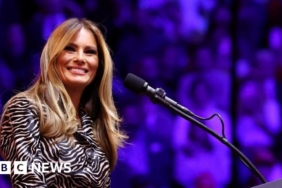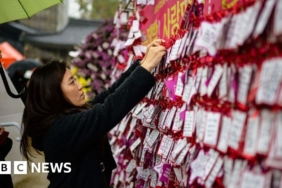Bu içerikte Rus rublesi, Ukrayna’ya yapılan tam ölçekli saldırının ilk haftalarından bu yana dolar karşısında en düşük seviyesine düştü. Batı’nın yeni yaptırımları ve artan jeopolitik gerilimlerin etkisiyle ruble, Çarşamba günü dolar karşısında 16 Mart 2022’den bu yana ilk kez 110 seviyesine ulaştı. Amerika Birleşik Devletleri’nin Gazprombank’a yaptırım uygulamasının ardından yaşanan son düşüş, Rusya’nın üçüncü büyük bankası olan Gazprombank’ın, Avrupa’ya kalan Rus doğal gaz ihracatlarının ödemelerini işleme koymada önemli bir rol oynamasıyla gerçekleşti. Güncel düşüş, Avrupa ekonomisinin enerjiye olan bağımlılığının azalması nedeniyle daha önce Rus gazının yaptırımlardan muaf tutulmasının ardından geldi. Gazprombank yaptırımları, Moskova’nın gaz gelirlerinde ve döviz gelirlerinde daha fazla azalma olasılığını gündeme getiriyor. Güçsüzleşen ruble, Rusların ithal ürünlerin maliyetini artırarak satın alma gücünü erozyona uğratma tehdidinde bulunuyor. Ülke zaten kontrolsüz enflasyonla mücadele ederken, bu yıl %8,5’e kadar çıkabilecek bir enflasyonla karşı karşıya. Artan enflasyon, merkez bankasını faiz oranını %21’e yükseltmeye zorladı – bu, 20 yıldan fazla bir sürenin en yüksek seviyesi – ve Aralık ayında daha fazla artış bekleniyor. Güçsüz ruble, ancak Kremlin’in bütçesini ayakta tutmasına yardımcı olacak ve enerji ihracatlarından önemli bir kısmı gelir elde etmek için kullanılacak. Avrupa, Rus enerjisine olan bağımlılığını önemli ölçüde azaltırken, Moskova petrol ihracatının büyük bir kısmını Çin ve Hindistan gibi pazarlara başarıyla yönlendirdi. Rusya Maliye Bakanı Anton Siluanov, rublenin değer düşüşü hakkında nadir bir resmi açıklama yaparak, Rusya’nın zayıf rublesinin ihracat şirketlerine fayda sağladığını ve Merkez Bankası’nın yüksek referans faiz oranının olumsuz etkisini dengelediğini ima etti. Rusya’nın ekonomisi, uluslararası yaptırımlar ve savaş baskıları karşısında birçok batılı yetkilinin beklediğinden daha dirençli olduğunu kanıtladı. Bununla birlikte, artan askeri harcamalar ve çalışma çağındaki erkeklerin cephede savaşa gitmesi ya da kaçması nedeniyle derinleşen işgücü sıkıntısı, ekonomideki gerilim ve maliyetli bir çatışmanın uzun vadeli sürdürülebilirliği konusunda Moskova’da büyüyen endişelere neden oluyor. Rusya’nın 2024 bütçesinin neredeyse üçte biri askeri harcamalara ayrıldı, soğuk savaştan bu yana en yüksek seviye. Analistler, ülkenin ekonomisinin stagflasyon belirtileri göstermeye başladığını söyledi – düşük büyüme ve yüksek enflasyonun bir kombinasyonu. Rusya Ekonomi Tahmin Enstitüsü’nden ekonomistlerin yayınladığı bir raporda, “ekonomik faaliyetin yavaşladığı ve finansal göstergelerin birçok sektörde giderek kötüleştiği açıkça ortaya çıkmaya başladı” denildi. Rus ekonomistler Alexander Kolyandr ve Alexandra Prokopenko, ülkenin militarizasyonunun ekonominin diğer sektörlerinde büyümeyi engellediğini belirtti. “Büyümenin hala fark edildiği tek yer, askeriyle bağlantılı sektörler. Ekonomide her yerde büyüme yok, ya da en iyi ihtimalle, zayıf” şeklindeki raporlarında yazdılar.
[ad 1]
Kaynak: www.theguardian.com






Yorumlar kapalı.